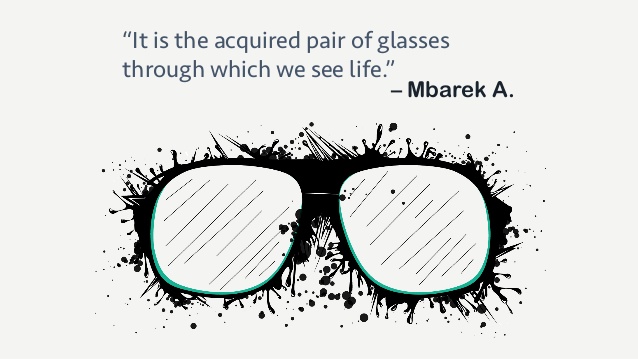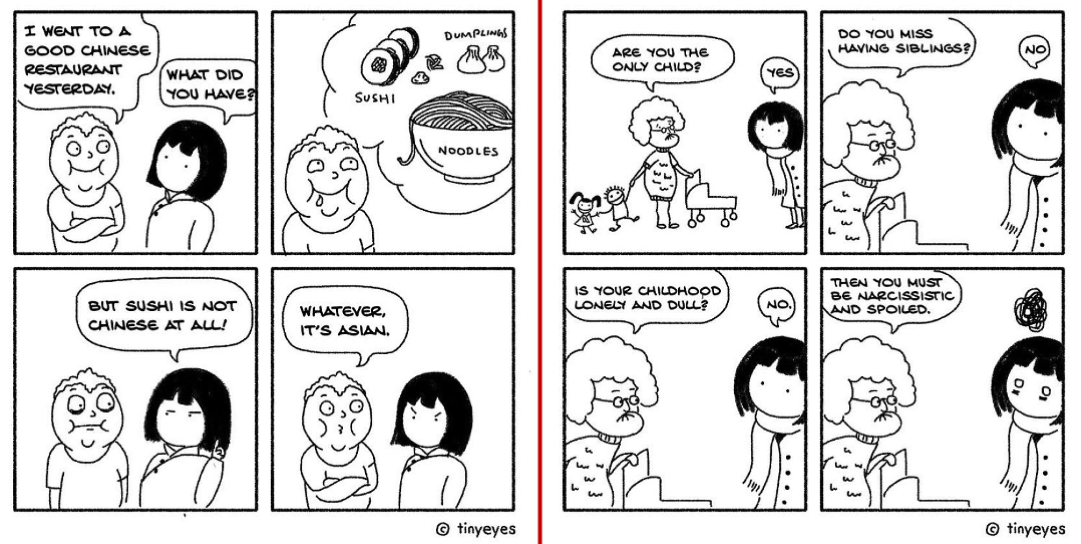1.0 What is Culture?
1.3 Inclusive Practices

 Inclusive Practices Checklist
Inclusive Practices Checklist
Please complete the readings and activities before continuing to Module 2.0.
☐ Read the definition of the “Cultural lens”
☐ Read Trecia’s 4 step process on cleansing your cultural lens
☐ Watch “How Culture Drives Behaviours” video
☐ Read about ODIS Method to suspend judgement
☐ Watch Trecia’s video on Building an Intercultural Mindset
☐ Watch Comedy Central video
☐ Reflection Note: Comedy Central video reflection

Now let’s look at some practices and techniques you can use to be more mindful and inclusive of people from different cultural groups.
Let’s talk about self-awareness because it is fundamental in raising cultural competence. One crucial area that needs close attention is that of our natural biases and how these can get in the way of making good decisions. An easy way to help us understand how people from different cultures view and interpret the world is to think of a cultural lens.
 The Cultural Lens
The Cultural Lens
We all wear a pair of unique lenses. Our lenses are formed by the culture(s) in which we live. These lenses filter the world for us and help us to make decisions as to what is right or wrong, acceptable, or unacceptable.
We all have a slightly different type of lens filtering our world which means that those with different coloured lenses, can and will see things differently to us.
So, the cultural lens analogy helps us understand that we all have a natural tendency to see things differently and that we typically use these perceptions to form judgments as to what is right, wrong, acceptable or unacceptable.
Sources: Cultural Lens Graphic, The Cultural Lens

Further Reading: Examine your LENS: A Tool for Interpreting Cultural Differences
Cleansing Your Cultural Lens
People don’t see the world as it is, but as they are, based on their perception. Our perception may be coated with varying debris of information, from various sources; we must make the effort to examine our data storehouse. Thus, cleansing the lens of our perception is important. Ultimately, the way we see the world does not change the world. It only changes the way we experience our lives in the world.
Let us heighten our sensitivity, seek new information, new ideas that broaden our perception. Let us start by understanding ourselves, especially acknowledging our influences as well as how we come to decisions about the world around us. Let us begin practicing the following steps towards raising our self-awareness.
 How Culture Drives Behaviours
How Culture Drives Behaviours
In the following video, Julien argues how we see the world through cultural glasses. By changing the glasses you can change the way you interpret the world.
 Tools to Suspend Judgment
Tools to Suspend Judgment
Have you ever found yourself in a new cultural setting thinking, “This situation feels strange,” or “I’m not sure how to read what’s going on right now?”.
When meeting and communicating with new people from different backgrounds it can be helpful to use different techniques to avoid making automatic judgments which can lead to cultural insensitivity.
What do these comic strips say? Did you encounter similar situations depicted in these strips?

 Applying ODIS Method to Suspend Judgement
Applying ODIS Method to Suspend Judgement
The ODIS Framework
Click on the purple question mark icons below for more information.
In the end, using the O.D.I.S. analysis allows us to have an honest, reflective dialogue with ourselves and helps us become more aware of our automatic reactions and emotions.
Further Reading: Tools to Suspend Judgement
 Building Intercultural Mindsets
Building Intercultural Mindsets
Now that we know how to avoid making automatic judgments; and have become more self-aware about our natural biases; let us concentrate on how we can develop intercultural competence in a sustained and continued manner. In this section, we will learn about the IDC or the Intercultural Development Continuum model which provides us a distinctive roadmap for developing intercultural competence in a progressive manner.
Downloadable version of the lecture slides.
 Reflection Note
Reflection Note
Watch the video clip from Comedy central. Observe the characters in the video carefully and try to answer the questions that follow.
This is a reflective exercise. The purpose of this exercise is to help you understand how easily cultural misinterpretations can happen. This exercise should enable you to consider how the misunderstanding in this video could happen in the office, in friendships, in classrooms, in person as well as over text/email (especially in a COVID-19 world).
You can complete this activity in any way that you prefer – Word document, PDF, PPT, visual, audio, video, etc. We have also provided you with an online form below so that you can capture your reflections and export a copy of your work.
 You’ve completed Module 1!
You’ve completed Module 1!
Time to do a happy dance.
 What’s coming up?
What’s coming up?
Now you can move on to Module 2.0 Communication Styles & Cultural Dimensions by using the menu at the left or the navigation at the bottom of this page.

